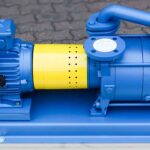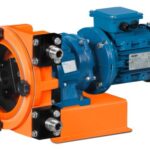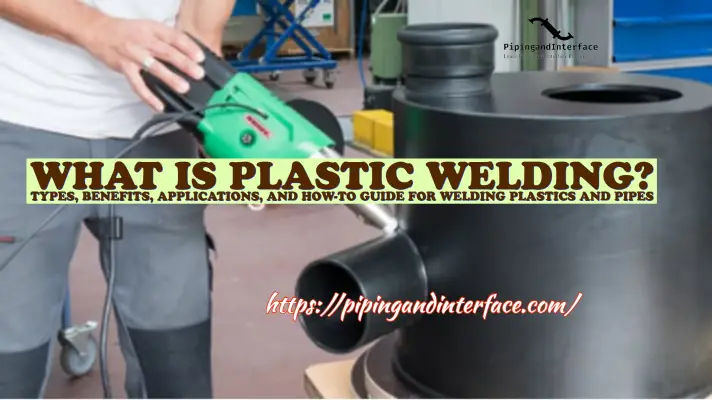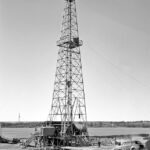In today’s fast-paced industrial landscape, efficiency and convenience are paramount. Quick Disconnect Fittings (QD fittings) have emerged as a critical innovation that revolutionizes fluid systems across a wide range of industries. From hydraulic and pneumatic applications to automotive and medical equipment, QD fittings play a pivotal role in enhancing productivity, safety, and ease of maintenance. In this article, we’ll delve into the world of Quick Disconnect Fittings, exploring their features, benefits, applications, and how they contribute to a more streamlined and efficient fluid handling process.
What Are Quick Disconnect Fittings?
Quick Disconnect Fittings, often referred to as QD fittings or quick connectors, are mechanical devices designed to swiftly connect and disconnect fluid lines or hoses. These fittings offer a secure and leak-free connection with minimal effort, eliminating the need for time-consuming threading or tooling. QD fittings consist of two main components: a male-end and a female-end, both equipped with complementary mechanisms that allow for rapid coupling and decoupling.
Benefits of Quick Disconnects
Quick disconnects immensely improve the user experience and serviceability by simplifying connections. The main advantages that quick disconnects provide are:
- Time Savings: Traditional methods of connecting fluid lines involve threading and tightening, which can be time-consuming. QD fittings enable operators to establish connections in seconds, boosting overall efficiency and reducing downtime.
- Easy Handling: QD fittings are designed with ergonomic features that make them user-friendly. Operators can quickly attach or detach hoses without the need for specialized tools, reducing strain and fatigue.
- Leak Prevention: The secure locking mechanisms of QD fittings ensure a tight and reliable seal, minimizing the risk of leaks and enhancing safety in fluid systems.
- Versatility: Quick Disconnect Fittings are available in a variety of sizes, materials, and configurations, making them suitable for a wide range of applications. Whether it’s hydraulic, pneumatic, chemical, or medical systems, there’s a QD fitting solution to match.
- Maintenance Efficiency: Routine maintenance and repairs become more straightforward with QD fittings. When components need replacement or servicing, operators can swiftly disconnect and reconnect hoses without disrupting the entire system.
- Cleanliness and Safety: The quick connection and disconnection process reduces the likelihood of spills or splatters, promoting a cleaner and safer work environment.
Types of Quick Disconnects
Quick disconnect fittings come in various types and configurations to suit different applications and industries. Each type has its own design, locking mechanism, and features that make it suitable for specific purposes. Here are some common types of quick disconnect fittings:
- Push-to-Connect Quick Disconnects: These fittings are designed for quick and easy connection without the need for tools. The male and female ends are pushed together, engaging the locking mechanism to create a secure seal. They are commonly used in pneumatic and low-pressure hydraulic systems.
- Twist-Lock Quick Disconnects: Twist-lock fittings require a simple twisting motion to connect and disconnect. They provide a secure connection and are often used in applications where frequent connections and disconnections are needed.
- Ball-Lock Quick Disconnects: Ball-lock fittings use a ball-bearing mechanism to secure the connection. The male and female ends are pushed together, and the ball bearings lock into place, ensuring a tight seal. These fittings are popular in high-pressure hydraulic and pneumatic systems.
- Dry Disconnect Fittings: Also known as dry break or dry disconnect couplings, these fittings are designed to minimize fluid loss during connection and disconnection. They are commonly used in industries where spills or leaks are hazardous, such as chemical and petroleum handling.
- Cam and Groove Fittings: Cam and groove fittings consist of two parts—a male “adapter” and a female “coupler” with cam arms. They are widely used for transferring liquids in industries like agriculture, food processing, and petroleum.
- Hydraulic Quick Disconnects: These fittings are specifically designed for high-pressure hydraulic systems. They come in various configurations, including screw-to-connect, push-to-connect, and flat-face designs. Hydraulic quick disconnects ensure efficient fluid transfer and are often used in construction, heavy machinery, and industrial applications.
- Pneumatic Quick Disconnects: Designed for pneumatic systems, these fittings provide rapid connection and disconnection of airlines. They are common in manufacturing, automation, and other industries requiring precise control over air pressure.
- Medical Quick Disconnects: These fittings are used in medical equipment and devices to ensure sterile and secure fluid transfer. They are designed with materials and features that meet stringent hygiene and safety standards.
- High-Flow Quick Disconnects: High-flow fittings are engineered to handle large volumes of fluid quickly. They are commonly used in industrial applications where efficient fluid transfer is essential.
- Multi-Coupling Systems: Multi-coupling systems allow multiple connections to be made simultaneously, speeding up the process of connecting and disconnecting various lines in complex systems.
- Hose Barb Quick Disconnects: These fittings have barbed ends that securely grip hoses, making them suitable for applications where hoses need to be connected and disconnected frequently.
- Electrical Quick Disconnects: These fittings combine fluid transfer with electrical connections, making them useful in applications where both fluid and electrical signals need to be transmitted.
Fig. 1 below provides some typical examples of quick disconnect fittings.

Applications of Quick Disconnect Fittings
Quick Disconnect Fittings find their utility across numerous industries, enhancing fluid system performance and reliability:
- Automotive: QD fittings are integral in automotive manufacturing and maintenance, facilitating fluid transfer for brakes, fuel lines, cooling systems, and more.
- Aerospace: In the aerospace sector, QD fittings streamline hydraulic and fuel systems, ensuring optimal performance and safety in aircraft operations.
- Medical: Medical devices and equipment often rely on QD fittings for sterile fluid transfer, making them crucial for applications like intravenous lines and dialysis machines.
- Industrial Manufacturing: From hydraulic machinery to pneumatic tools, QD fittings enhance fluid handling efficiency, contributing to seamless industrial processes.
- Agriculture: QD fittings play a role in modern irrigation systems, making it easy to connect and disconnect hoses for watering crops and fields.
Water Quick Disconnect Fittings
Water quick disconnect fittings are specialized connectors used to quickly and easily attach and detach water hoses or lines. These fittings are designed for applications where efficient and leak-free connections are important, such as in gardening, irrigation systems, water supply lines, and outdoor water equipment.
Hose Quick Disconnect Fittings
Hose quick disconnect fittings refer to connectors that allow hoses to be swiftly attached and detached from various systems or equipment. These fittings are widely used in industries like agriculture, manufacturing, and automotive, where hoses are frequently connected and disconnected for fluid transfer or other purposes.
Air Quick Disconnect Fittings
Air quick disconnect fittings are connectors designed specifically for pneumatic systems. They enable rapid and secure attachment and removal of airlines, making them essential in industries like manufacturing, automation, and construction where pneumatic tools and equipment are used.
Fuel Line Quick Disconnect Fittings
Fuel line quick disconnect fittings are connectors used in automotive, marine, and industrial applications to quickly connect and disconnect fuel lines. These fittings ensure a safe and reliable connection for fluid transfer while minimizing the risk of leaks or spills.
Plastic Quick Disconnect Fittings
Plastic quick disconnect fittings are connectors made from various types of plastic materials, such as PVC, polypropylene, or nylon. These fittings are lightweight, corrosion-resistant, and often used in applications where metal fittings may not be suitable, such as in water, chemical, or low-pressure pneumatic systems.
Tubing Quick Disconnect Fittings
Tubing quick disconnect fittings are connectors designed for flexible tubing, allowing for rapid attachment and detachment. These fittings are commonly used in medical devices, laboratory equipment, and fluid handling systems where flexible tubing is used to transfer liquids or gases.
Gas Quick Disconnect Fittings
Gas quick disconnect fittings are connectors used for gas lines, such as natural gas or propane. They provide a secure and efficient means of connecting and disconnecting gas lines in applications like outdoor grills, heating systems, and industrial gas supply lines.
How to Specify a Quick Disconnect?
Specifying a quick disconnect fitting involves understanding the specific requirements of your application and selecting the appropriate fitting based on factors such as fluid type, pressure, temperature, compatibility, size, and intended use. Here’s a step-by-step guide on how to specify a quick disconnect fitting:
- Identify Application Requirements:
- Determine the type of fluid (liquid or gas) that will flow through the fitting.
- Note the operating pressure and temperature range of your system.
- Consider any special requirements, such as chemical compatibility, sterile conditions (for medical applications), or resistance to corrosion.
- Select the Right Material:
- Choose a material that is compatible with the fluid being transferred and suitable for the operating conditions. Common materials include stainless steel, brass, aluminum, and various plastics.
- Ensure the material is corrosion-resistant and can withstand the intended environment.
- Determine Connection Size and Type:
- Measure the inner and outer diameter of the hose or tubing that will be connected to the fitting.
- Determine the connection type needed, such as male-to-female, female-to-female, or male-to-male.
- Consider Locking Mechanisms:
- Decide on the type of locking mechanism needed for your application. Some QD fittings use push-to-connect mechanisms, while others use twist-lock or ball-lock mechanisms.
- Choose a locking mechanism that offers a secure and reliable connection while allowing for quick and easy disconnection.
- Check Pressure Ratings:
- Verify that the selected fitting can handle the maximum operating pressure of your system without leaking or failing.
- Ensure that both the male and female ends of the fitting have compatible pressure ratings.
- Evaluate Temperature Limits:
- Confirm that the fitting can withstand the highest and lowest temperatures that your system may experience without deformation, leakage, or other issues.
- Assess Environmental Conditions:
- Consider the working environment of your application, such as exposure to chemicals, UV radiation, or outdoor elements.
- Choose a fitting that can withstand these conditions and maintain its performance over time.
- Review Industry Standards and Regulations:
- Research any industry-specific standards or regulations that may apply to your application, such as those set by regulatory bodies or safety organizations.
- Consult with Experts:
- If you’re unsure about which quick disconnect fitting to choose, consider consulting with experts or manufacturers who specialize in fluid handling systems. They can provide valuable insights and recommendations based on your specific needs.
- Installation and Testing:
- Follow the manufacturer’s guidelines for proper installation and testing of the quick disconnect fitting.
- Conduct pressure and leak tests to ensure the fitting functions as intended and maintains a secure connection.
Conclusion
In an era where time is of the essence and efficiency is a top priority, Quick Disconnect Fittings shines as an indispensable solution for fluid handling systems. Their ability to save time, ensure leak-free connections, and promote ease of maintenance has made them a cornerstone technology across various industries. As technology continues to evolve, Quick Disconnect Fittings will undoubtedly remain a vital component in enhancing productivity and safety, revolutionizing the way fluid systems are managed and maintained.






